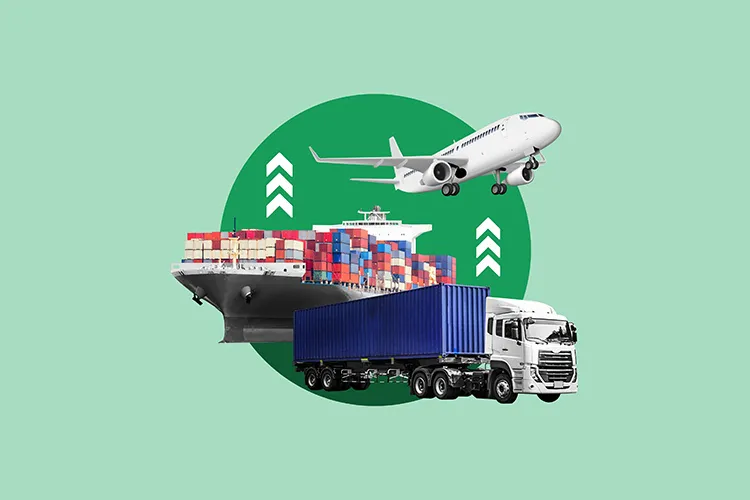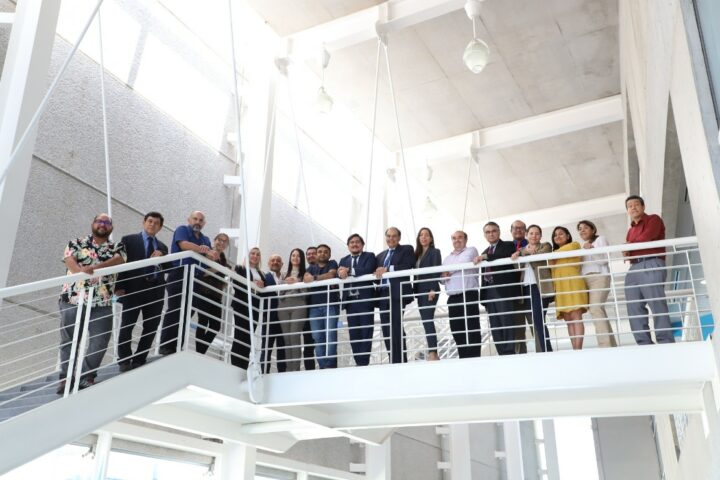According to the Global Companies Council, nearshoring could boost Mexico’s labor productivity by 15% to 30% by 2030. Nearshoring involves bringing in production lines to places closer to the end user.
Countries like the United States, which import from Asia, can improve their production and logistics lines by acquiring inputs from plants close to their borders, such as those in Mexico.
In an interview, Osmar Zavaleta, Associate Dean of Research at the Tec de Monterrey’s School of Business and EGADE, and Roberto Durán, research professor at the Tec’s School of Government and Public Transformation, discuss the opportunities for nearshoring in Mexico.
According to Zavaleta and Durán, the foundation of this transition is a considerable increase in labor prices in China and the restructuring of value chains during the pandemic, which highlighted a vulnerability in companies’ supply lines.
“Some companies have said, ‘there is a way to create more resilience within the economy if we rethink value chains’ and instead of producing on the other side of the world, have shorter chains within the same hemisphere,” Durán added.
Mexico Nearshoring
Mexico’s attraction in Nearshoring lies in its strategic location, notably the country’s northern states, which are close to the US.
Companies increasingly seek to migrate to states like Nuevo León and Coahuila and industrialized regions like the central and Bajío.
One of the country’s benefits is its experience with exports and trade agreements such as the United States–Mexico–Canada Agreement (USMCA) and modern industrial infrastructure.
This does not imply that all factories have left Asian countries to move to Mexico; new production lines are being constructed in diverse regions to diversify risks.
“Mexico somehow has an advantage being the eighth economy with the most international trade agreements, with more than 50 countries, opening up a potential market of 1.5 billion consumers,” Zavaleta said.
More than Just Manufacturing
One of the primary risks of working in a developed region’s supply chain is simply being an “assembler” of a finished product without contributing new information and receiving only monetary rewards rather than scientific or technological growth.
According to Zavaleta and Durán, Nearshoring, as it presently exists, can improve economic conditions, create jobs, and strengthen ecosystems, including governments, industry, and educational institutions, to stimulate innovation, technological development, and technology transfer.
The promotion and implementation of industrial policies that promote the development of these areas, as well as other less industrialized states in Mexico, such as the southeastern region, can significantly impact the country’s development.
“I believe now is a good opportunity for properly preparing for balanced expansion in these ecosystems. For example, there are areas where water is not an issue but a lack of industry, as well as areas where there is industry but a lack of water,” Zavaleta says.
The professor cites China’s industrial sector as an example of improvement, with average manufacturing output per employee increasing from less than $500 per person per year to $7,000 today after entering the World Trade Organization in 2000.
Nearshoring: An Opportunity for Science, Research, Innovation, and Education
Producing knowledge is another option for Nearshoring in Mexico. For example, in collaboration with other educational and research institutions and industry and government levels, Tec de Monterrey has launched programs to streamline the country’s value chains.
A clear example is the Core Lab for Additive Manufacturing at the Institute of Advanced Materials for Sustainable Manufacturing, a space dedicated to designing and manufacturing materials for industry using additive manufacturing, in which companies and academia collaborate to develop prototypes, inputs, and joint research.
Similarly, a multidisciplinary committee was formed at the Tec School of Business to develop a study on nearshoring, which will be published as a book and include ideas and collaborative work with organizations like the Inter-American Development Bank.
Durán and Zavaleta also mention that the teams frequently attend joint conferences hosted by the School of Business, the School of Government, and the Institute of Advanced Materials for Sustainable Manufacturing, where they share the most relevant findings from their research on the subject.
“If you ask me if Nearshoring can be a currency that helps the country thrive, I will respond that I am not sure. Strong political will, extensive government direction, and collaborations with businesses and universities all play a role. We have a lot of work to do,” Zavaleta said.



















